- Home
- Philippa Gregory
The Taming of the Queen Page 27
The Taming of the Queen Read online
Page 27
There is a tap on the door, the guards swing it open, and in walks Anne Askew, as trim and as pretty as if she had just come from the seamstress. She steps in, a gleeful little smile on her face, and dips a deep curtsey to me.
‘God bless us!’ Nan exclaims and, forgetting herself completely, crosses herself as if she were seeing a ghost.
‘You’re a welcome stranger!’ I say. ‘It’s a long time since we saw you! I was glad to know you were safe, that Bishop Bonner had released you, but we heard he sent you home. I didn’t think to see you again at court.’
‘Oh, yes, I was sent home to my husband,’ she says, quite matter-of-fact. ‘And I thank Your Majesty for letting it be known that I am under your protection. You saved me from more questioning, and a trial, I know. They did send me home to my husband, I was paroled into his keeping, but I have left him again and here I am.’
I smile at the boldness of the young woman. ‘Mistress Anne, you make it sound easy.’
‘As easy as sin,’ she says cheerfully. ‘But it is not sin, I promise you. My husband knows nothing of me, nor of my faith. I am as strange to him as a deer in the sheep pen. There is no way that we could marry in the sight of God and no way that such vows could be binding. He thinks as I do, though he has not the courage to say it to the bishop. He does not want me in his home, any more than I can tolerate being there. We cannot be yoked together – a deer and a sheep.’
Nan gets to her feet, alert as a yeoman of the guard. ‘But should you be here?’ she asks. ‘You cannot bring heresy to the queen’s rooms. You cannot come here if you have been ordered to stay with your husband, whether he is a sheep and you a deer or both of you a pair of fools.’
Anne puts out her hand to halt Nan’s anxious torrent of words. ‘I would never bring danger to Her Majesty’s door,’ she says calmly. ‘I know who I have to thank for my release. I owe you a debt for life,’ she adds with a little curtsey to me. Then she turns back to Nan. ‘They were satisfied with my answers. They questioned me over and over but I did not say a word that was not in the Bible and they had no handle to hold me, nor rope to hang me.’
Nan hides an involuntary shudder at the mention of the hangman and glances towards me. ‘Bishop Bonner has no complaint against you?’ she repeats incredulously.
Anne lets out a ringing, confident laugh. ‘That’s a man who would always be complaining about something. But there was nothing he could fix on me. The Lord Mayor asked me did I think the Host was holy, and I did not answer, because I know that it is illegal to speak of the bread of the Mass. He asked me if a mouse ate the Host would the mouse be holy? I just said, “Alack, poor mouse.” That was the best of his questions: trying to trap me with a holy mouse!’
Despite myself I cannot help but laugh, and Catherine Brandon catches my eye and she giggles.
‘Anyway, thank God that they released you, and obeyed the queen,’ Catherine says, recovering. ‘We are winning the argument, almost everyone is persuaded by the queen’s thinking. The king listens to her, and the whole court thinks as we do.’
‘And the queen has translated a book of prayers that have come out under her own name,’ Nan says proudly.
Anne turns her brown gaze to me. ‘Your Majesty, this is to use your education and your position for the good of all true believers, and especially for the good of women. To be a woman and to write! To be a woman and to publish!’
‘She is the first,’ Nan boasts. ‘The first woman to publish in the new printed books in England, the very first woman to publish in the English language. The first to write her own prayers and not merely translate.’
‘Hush,’ I say. ‘There are many scholars like me, and many better read. There have been women writers before me. But I am blessed with a husband who allows me to study and write, and we are all blessed with a king who allows the prayers of the church to be understood by his people.’
‘Thank God for him,’ Anne Askew says fervently. ‘Do you think he will allow the Bible back into the churches again for everyone to read?’
‘I am certain of it,’ I say. ‘For since he has commissioned a translation of the Mass, he is bound to want the Bible to be read to the people in English, and the Bible will be restored to the churches once more.’
‘Amen,’ Anne Askew says. ‘And my work will be done. For all I ever do is recite the words of the Bible that I have memorised, and explain what the words mean. Half the gospellers in London are nothing more than speaking Bibles. If the Bible were allowed back into the churches we would all be at peace. If the people can read it for themselves again it will be like the feeding of the multitude. It will be a miracle of our age.’
WHITEHALL PALACE, LONDON, AUTUMN 1545
We come to Whitehall as the weather turns cold and the frost in the garden makes the yew trees in the allées silvery white on the tips of their branches and green and dark in their shades. The bowls of the fountains are skinned with ice, and I order all the furs to be brought from the wardrobe rooms at my house, Baynard’s Castle. Once again they drape Kitty Howard’s sables around my neck, but this year I find that they are scented with my perfume and the ghost of the girl queen is gone into the cold twilight.
Nicholas de Vent has completed his great portrait of the five of us and it is waiting for its formal unveiling, fixed in its place, just as we specified that it should be, shrouded in a cloth of gold. Nobody has seen it since it left his studio; we are waiting for the king to announce that he wants to see it.
‘Will Your Majesty come and unveil the portrait?’ Anne Seymour asks me. ‘His Majesty asked my lord husband to escort you.’
‘Now?’ I ask. I am reading a book, as simple as a child’s primer, that explains the mystery of the Mass, the reality of purgatory. It is a book approved by the Privy Council and it is written in exactly their pompous tone of certainty. I close it, and wonder how it is that men, even thoughtful men, can sound as if they never consider anything but always simply know.
‘Yes, now,’ she says. ‘The painter is here; everyone is gathering.’
‘Is the king coming?’
‘His Majesty is resting,’ she says. ‘His leg is bad. He says he will see it later.’
I get to my feet. ‘I’ll come,’ I say. I see Elizabeth’s bright face bob up. She is such a vain child, she longs to see what the painter will have made of her. She sat for him in her best gown, in the hope that in the final design she will be placed centre stage, close to her father’s hand, an acknowledged Tudor princess. Princess Mary and I exchange a wry look over Elizabeth’s head. We may not be excited like a girl at the thought of this portrait, but we are both glad to be publicly acclaimed. This picture will hang in Whitehall Palace for years, perhaps for centuries. People will copy it and have the copies in pride of place in their own homes. It will show the royal children with their father, and me: seated at his side. It will mark my achievement – a great achievement – of bringing the royal children to their father. I may not give him a child as Jane Seymour did, I will not be his wife for twenty-three years like Katherine of Aragon, but I have done something that no wife has managed to do before – I have put the children at the heart of the royal family. The two girls and the precious heir are in the same portrait as their father. It is a picture of a royal family and I am there as their acknowledged mother. I am queen, I am regent, I am their mother, and the portrait will show my children around me, my husband beside me; and those who doubt my influence and think that they can conspire against me can look at this portrait and see the woman at the heart of the royal family.
‘We’ll come at once,’ I say.
I am eager to see how I look. After trying many colours I chose to wear my red undergown, with an extravagant overgown of cloth of gold trimmed with ermine. The painter himself selected it from the royal wardrobe. He said that he wanted the colours of the picture to be all red and gold, to show our wealth, to show our unity, to show our grandeur in royal colours. I did not say that red is my favourite, but of course I
know that it sets off my white skin and my auburn hair. He asked me to change my headdress, from my favourite French hood, a semi-circular frame that I wear set back on my hair, to the more old-fashioned gable type. Nan brought his choice from the royal treasury and set it on my head. ‘Jane Seymour’s,’ she said briefly. ‘Gold leaf.’
‘I would never wear this!’ I exclaim, but he pushed it gently back so that my hair showed a little, so that it framed my face.
‘It is a privilege to paint a beautiful woman,’ he said quietly, and he showed me how he wanted me to sit, perched on the edge of a chair, my gold gown a pool around my feet.
Now I smile at Princess Mary. ‘I am gripped with vanity,’ I say. ‘I can’t wait to see it.’
‘Me too,’ she says. She takes Elizabeth’s hand and I lead the way, with Edward Seymour at my side and the women of my chamber following behind. We get to the great hall, and the men of the court, even some of the Privy Council, are already there, curious to see this great picture that has cost so much to commission and taken so long to produce. No-one has seen it assembled. We all posed individually, the painter mostly working from earlier portraits of the king, so this will be a surprise for us all. I see Nicholas de Vent, the artist, looking anxious, as well he might.
‘Is His Majesty not coming?’ he asks as he bows to me.
I am about to say ‘no’, when the great doors to the king’s presence chamber open and his wheeled chair comes out, with the king half sitting, half lying in it, his great leg sticking out before him, his face red and swollen stiff in a grimace of pain.
The artist gives a little exclamation of surprise. He has not seen the king since we first discussed the portrait and then de Vent copied the king’s likeness from the great portraits by Hans Holbein, which the king prefers above any other. I imagine that the painting behind the screens will show a handsome man of about forty years with his wife and young family around him. He will have two well-shaped legs in ivory hose with the usual blue garter tied under the knee to show off the strong calf. He will not be sprawled like a ship wrecked in dry dock, sweating with the effort of raising his enormous head.
I go to him, curtsey and kiss his hot cheek. ‘What a pleasure to see Your Majesty,’ I say. ‘And you’re looking so well.’
‘I wanted to see what he had made of us,’ he says shortly. He nods at de Vent. ‘Unveil it.’
It is a huge picture, nearly five feet high and more than ten feet long, and the cover gets caught on the top right-hand corner so we see it revealed inch by inch from the left, while a page runs to fetch a stool so that he can reach to the corner where the gold cloth is snagged, hiding the full picture.
First a beautifully ornate pillar shining with silver and gold engraving, and a ceiling, bright as stained glass, with red and white Tudor roses. Then a doorway. There is a little gasp of surprise, for there is Princess Mary’s Fool, walking past the archway in Whitehall Palace garden as if to say that all life is passing, that it is a court of fools. In the garden behind her are the carved heraldic beasts on posts as if to say that all glory is folly. I glance at the king to see if he is surprised to see Jane the Fool in the top corner of his royal portrait, but I observe his slow nod, and I know that he approved this, even the position of the Fool. He will think that he is making some kind of profound statement about fame and the world. Another pair of matching gold pillars frame the figure of a woman in the foreground. It is Princess Mary in her dark red gown with the greeny-brown overgown, cut square at her throat, trimmed with white silk slashings on her sleeves and white lace cuffs at her wrists. She wears a French hood, pushed back from her pale face, and a crucifix at her throat. I look carefully at the portrait and then I turn and give her a warm approving smile. It is fitting. She looks regal and dignified, her two hands clasped before her, her face turned towards the viewer with a small smile. If anyone copies this to show to a suitor, a foreign prince seeking her in marriage, it will be a fair likeness. She looks both queenly and girlish. The painter has captured her dignity and her charm. I see her rising blush and she gives me a little nod. This is a good likeness; we are both pleased.
The cover drops a little and the court gasps to see Prince Edward, square as his father, standing stocky and bold in a bulky jacket and red stockings, a red hat crammed on his little head, his sleeves ridiculously stuffed. A few people applaud. This could be the Holbein portrait of the king cut down to three feet tall. The painted prince leans with a confident elbow on his father’s knee, as Edward would never dare to lean in real life, and Henry’s hand is on his shoulder, holding him close, as he has never done. The boy is presented to the eye as if Henry had just given birth to him from between his wide-straddled legs: this is his son and heir, the pose insists. This is the boy of the king’s own making, in his image, his little red egg.
Behind them both, as a backdrop and extending over their heads, is the cloth of estate showing the royal crest, above that a gold seal like a holy halo that the old idolatrous church painters used to enamel over the heads of painted saints. In the middle of the picture, still half-concealed by the drape, which the pages are desperately tugging, is the king himself. The painter has made him the heart of the picture, plumb centre in the blazing colours of a golden sun. His huge puffed sleeves, fat as a pair of bolsters, are in cloth of gold, slashed with white silk, the skirts of his short robe are red and gold, his parted sturdy legs are blazing silver in ivory stockings, the strong calves gleaming, the round knees like two little moons. His gown is trimmed with sable, thrown off the huge padded shoulders, his face is big, pale and unlined, and his codpiece – ‘My God,’ I murmur at the very sight of it. The huge ivory codpiece is boldly erect at the very centre of his body, at the heart of the picture. Enormous and gleaming palely, among all the red and the gold, it does everything but announce to the viewer: here is the king’s cock. Admire!
I bite the inside of my lips so that I do not allow even the whisper of a giggle to escape me, I don’t dare look at Catherine Brandon. The painter must have lost his wits to be so brash; even the king’s monstrous vanity cannot think that this is anything but ridiculous. But then the page finally frees the curtain that has concealed the rest of the portrait, the fabric drops to the floor and at last I see my own likeness.
I am seated at the king’s left hand, in the gown that the painter and I chose together, the red underskirt and sleeves complementing the red of Prince Edward’s robe, my gold bodice and overskirt matching the king’s puffy sleeves, and the white ermine lining and sleeves marking my royalty. The English hood that Nicholas de Vent chose from the royal wardrobe is perfectly rendered, the girdle at my waist done in fine detail, my skin as pearly and as pale as the king’s magnificent legs. But my face . . .
But my face . . .
My face . . .
There is a murmur of comment in the court like the whisper of wind through the trees of an autumn wood. I hear people remark, ‘Oh, I didn’t expect . . .’ and, ‘But that isn’t . . .’ and, ‘Surely that’s . . .’ and then everyone bites off the end of their sentences as if nobody wants to observe what is painfully, terribly obvious, and grows more and more obvious, as a silence falls, and someone clears their throat, and someone else turns away, and slowly, though they don’t want to stare, no-one can resist it any longer: and everyone turns to look at me.
They look at me. And I am looking at Her.
It is not my portrait. It is not my face. I sat for it indeed, and I wore these clothes, the clothes from the royal wardrobe, the clothes that signify a Queen of England. The painter put my hands in that position, tilted my face to the light, but it is not my features under her golden hood. The king has commissioned a portrait of his third wife, Edward’s mother, and had me sit in for her, like a doll, so that the painter could get the size and the shape of a wife, any wife. But the face is not mine. The painter did not have to try to capture what he called my luminous beauty. Instead he shows the sharp outline of Jane Seymour’s hood and beneath it the bovine
blankness of Jane Seymour, the dead queen, who sits at the king’s left hand, admiring him and her son, from the grave; and I might as well never have been.
I don’t know how I stand, how I smile and remark on what a beautiful picture it is, how well Elizabeth looks, on the left of the woman who supplanted her mother, a stepmother that she cannot even remember: her mother’s lady-in-waiting, the woman who danced the day that her mother was beheaded. I laugh at the portrait of Will Somers in the right-hand doorway, his monkey on his shoulder, the Whitehall gardens behind him. I hear my tinkling laugh and the way that people eagerly join with me, as if to obscure my humiliation. Nan comes to one side of me as if she would hold me up, and Catherine Brandon comes to the other, and they admire the picture and make a babble of noise. Anne Seymour, my lady-in-waiting, stays at a distance and remarks on the beauty of her dearest tragic sister-in-law.
I keep staring at the portrait. I think it is an altarpiece, an icon like those the reformers have rightly thrown out of the old corrupt church. It is like a triptych with three panels: the two princesses on either side, and the Holy Family, the Father and the Son and the transfigured mother, in the central panel. The two Fools are the worldly fools outside, while the inside world of the royal family glows like gold. Jane Seymour, overcoming death, shines like Our Lady.
Elizabeth comes and takes my hand and whispers: ‘Who is that? Who is it in your place?’
And I say, ‘Hush, it is Queen Jane, Edward’s mother,’ and at once her clever little face closes up as if I have told her a secret of shameful doings, something foul and wrong. And at once – and this is how I know she has been corrupted beyond saving – she turns a smiling face to her father and tells him what a beautiful portrait he has commissioned.
Princess Mary throws me a brief glance and says nothing, and then the court falls silent as we wait for the king to speak. We wait, and we wait, Nicholas de Vent turning his cap in his hand, sweating with nerves to see what the great patron of art, Holbein’s patron, has to say about this production, this painted lie, this masterpiece of self-aggrandisement, this grave-robbing.

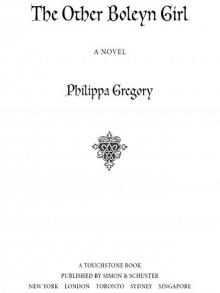 The Other Boleyn Girl
The Other Boleyn Girl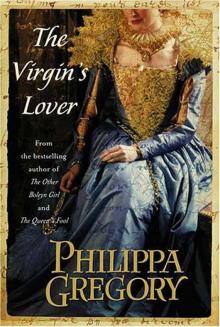 The Virgin's Lover
The Virgin's Lover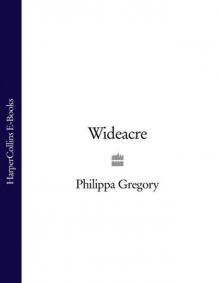 Wideacre
Wideacre The White Queen
The White Queen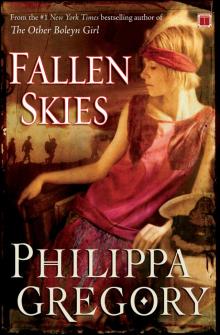 Fallen Skies
Fallen Skies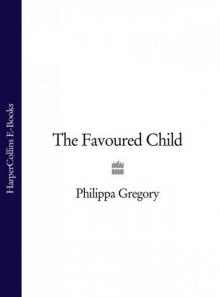 The Favoured Child
The Favoured Child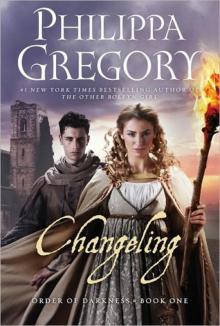 Changeling
Changeling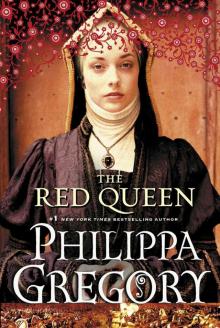 The Red Queen
The Red Queen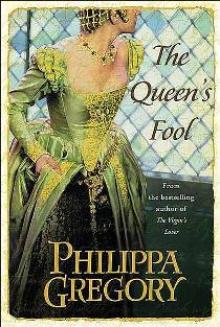 The Queen's Fool
The Queen's Fool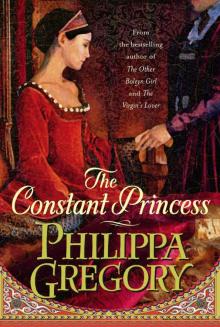 The Constant Princess
The Constant Princess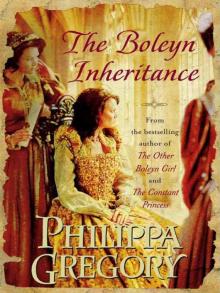 The Boleyn Inheritance
The Boleyn Inheritance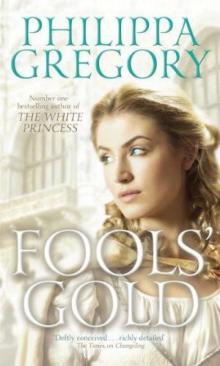 Fools' Gold
Fools' Gold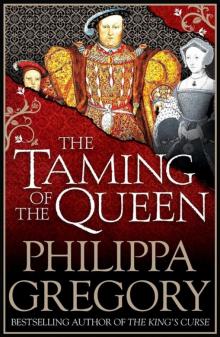 The Taming of the Queen
The Taming of the Queen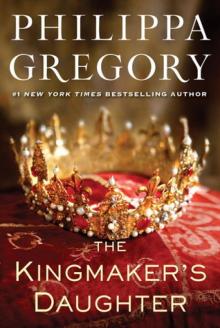 The Kingmaker's Daughter
The Kingmaker's Daughter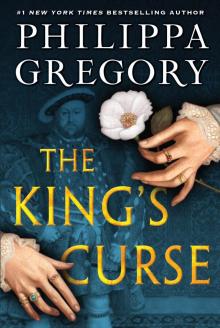 The King's Curse
The King's Curse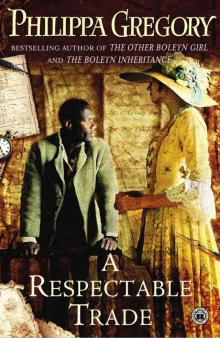 Respectable Trade
Respectable Trade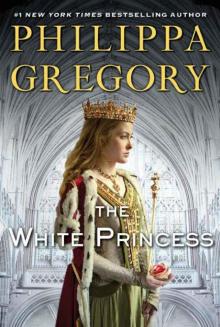 The White Princess
The White Princess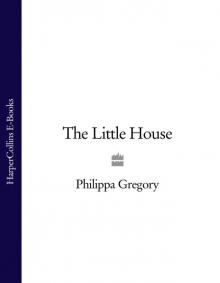 The Little House
The Little House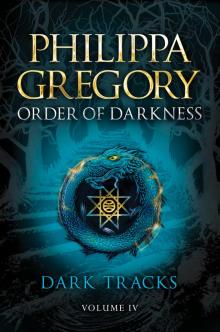 Dark Tracks
Dark Tracks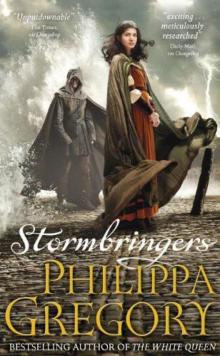 Stormbringers
Stormbringers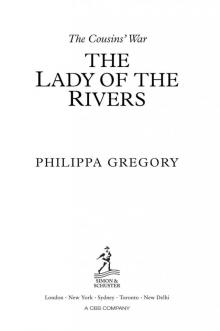 The Lady of the Rivers
The Lady of the Rivers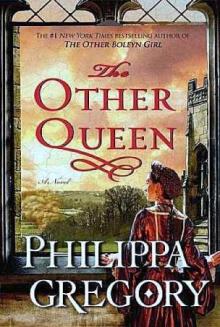 The Other Queen
The Other Queen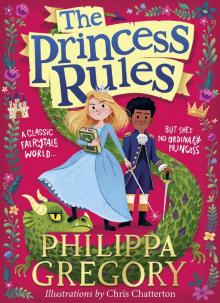 The Princess Rules
The Princess Rules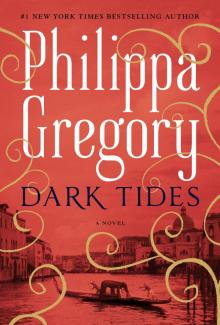 Dark Tides
Dark Tides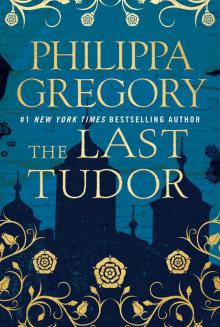 The Last Tudor
The Last Tudor Virgin Earth
Virgin Earth Earthly Joys
Earthly Joys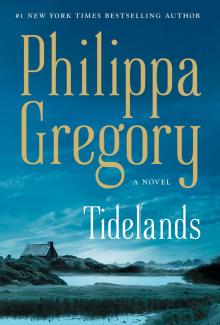 Tidelands
Tidelands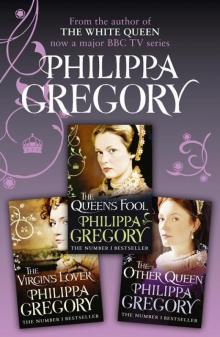 Philippa Gregory 3-Book Tudor Collection 2
Philippa Gregory 3-Book Tudor Collection 2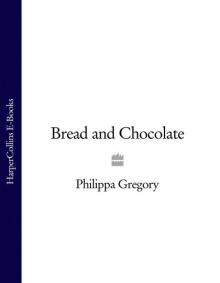 Bread and Chocolate
Bread and Chocolate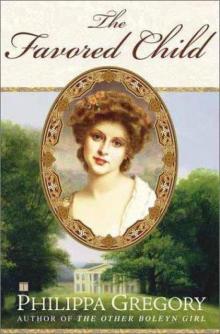 The Favoured Child twt-2
The Favoured Child twt-2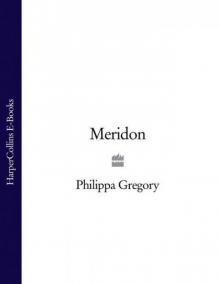 Meridon (Wideacre Trilogy 3)
Meridon (Wideacre Trilogy 3)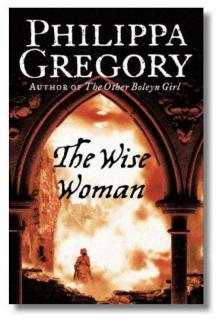 The Wise Woman
The Wise Woman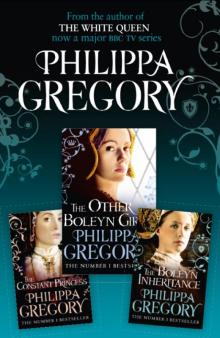 Philippa Gregory 3-Book Tudor Collection 1
Philippa Gregory 3-Book Tudor Collection 1 The White Queen: A Novel
The White Queen: A Novel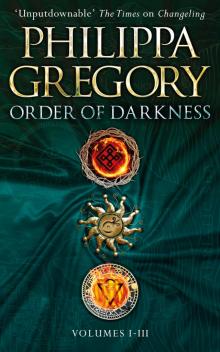 Order of Darkness
Order of Darkness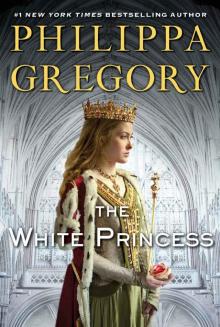 The White Princess (Cousins' War)
The White Princess (Cousins' War)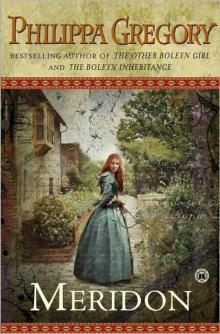 Meridon twt-3
Meridon twt-3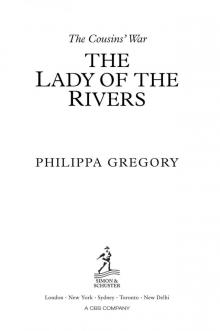 Lady of the Rivers
Lady of the Rivers Novels 03 The Wise Woman
Novels 03 The Wise Woman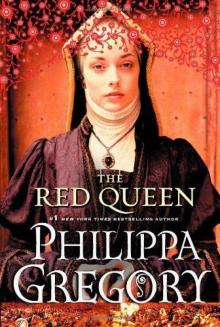 The Red Queen tc-2
The Red Queen tc-2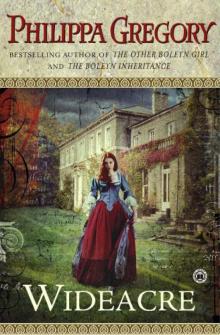 Wideacre twt-1
Wideacre twt-1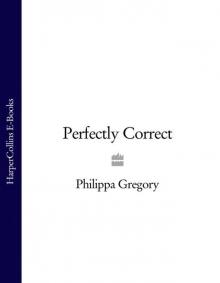 Perfectly Correct
Perfectly Correct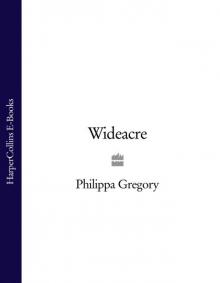 Wideacre (Wideacre Trilogy)
Wideacre (Wideacre Trilogy)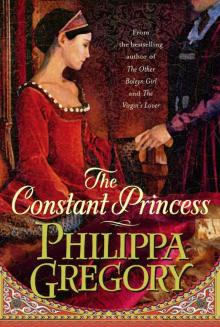 The Constant Princess ttc-1
The Constant Princess ttc-1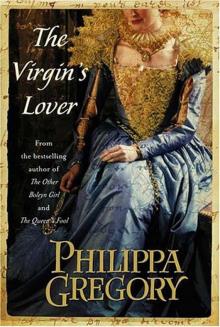 The Virgin's Lover ttc-4
The Virgin's Lover ttc-4